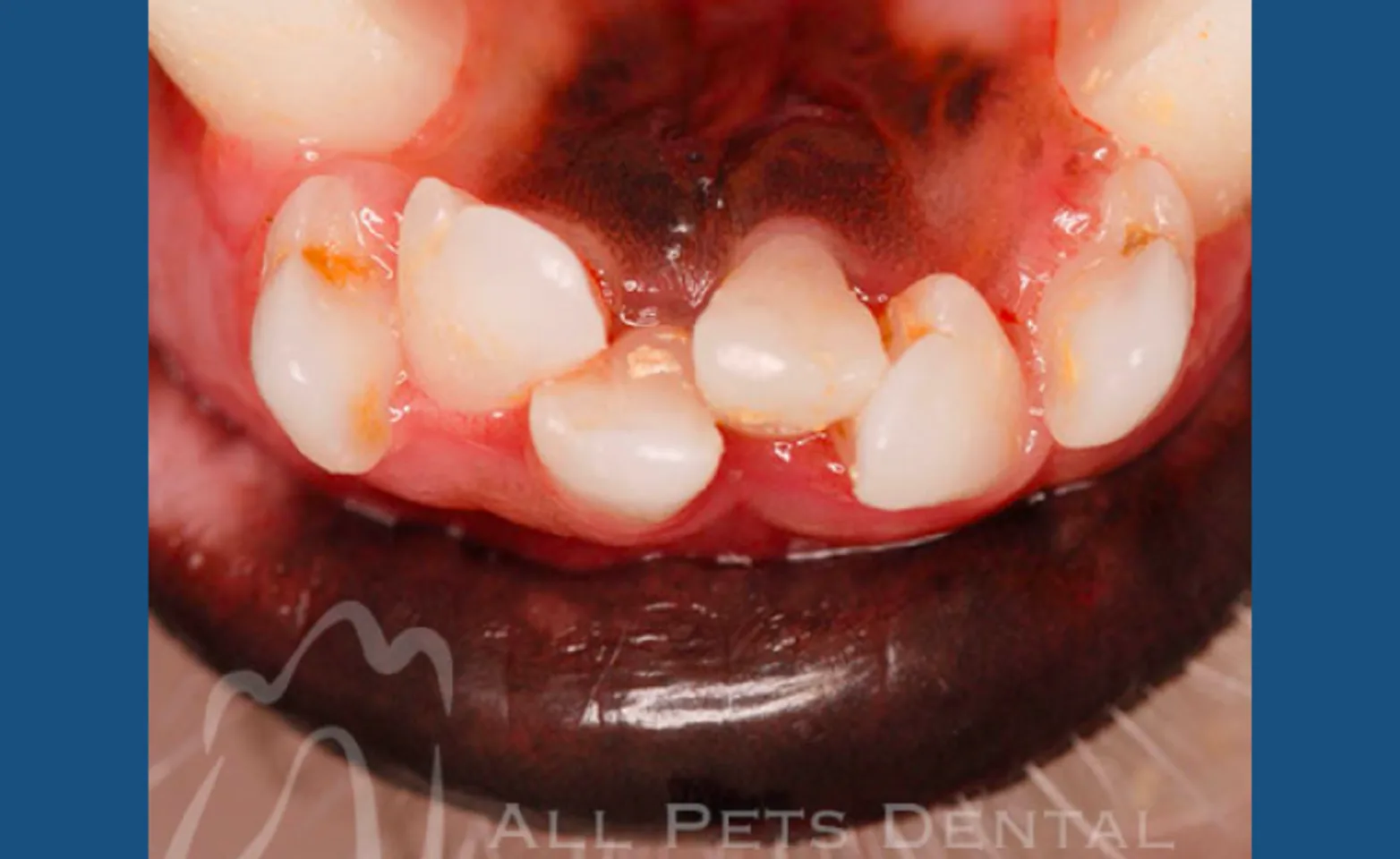Hometown Animal Hospital

Canine Orthodontics

Caudal Crossbite
A condition where teeth are in a reversed alignment. Caudal crossbite is a misalignment of the molars where the upper tooth is angled too far inward, the lower tooth is angled too far outward, or a combination of both.

Lingually Displaced Mandibular Canines
This can be a painful condition where the lower canines penetrate into the hard palate. Treatment of choice is either to move the lower canine teeth into a functional position, decrease the height of the lower canines to alleviate penetration, or extract the lower canines.

Rostral Crossbite
A rostral crossbite is present when one or more of the upper incisor teeth is positioned abnormally behind it’s lower incisor tooth in a normal skull.

Maxillary/Mandibular Assymetry
A wry mouth or bite occurs when one side of the jaw grows more than the other. Wry bites show as triangular defects in the incisor area. Some of the incisors will meet their opposing counterparts, while others will not. Wry bite is a severe inherited defect. Treatment goal is to create a pain free functional bite.

Mandibular Disoclusion
(Overbite)
Describes a relationship between dental arches where the lower jaw is shorter than normal relative to the upper jaw. Treatment may involve tooth movement, or extraction(s), based on physical exam findings, to eliminate discomfort.

Mandibular Mesioclusion
(Underbite)
Properly termed mandibular mesioclusion occurs when the lower jaw is located in front of the upper jaw. Treatment may involve tooth movement, extraction(s) or crown reduction and restoration, based on physical exam findings creating a functional pain free bite.

Crowded Teeth
Occurs when the normal arch configuration of teeth is disrupted. Crowded teeth commonly lead to increased plaque accumulation, early periodontal disease, tooth mobility and tooth loss. Extraction is the treatment of choice for crowded teeth.

Arch Bar and Elastic Orthodontic Appliance
The movement of teeth to functional positions can be facilitated using brackets and elastics. Fortunately the process usually takes months in dogs and cats vs. years in people.
